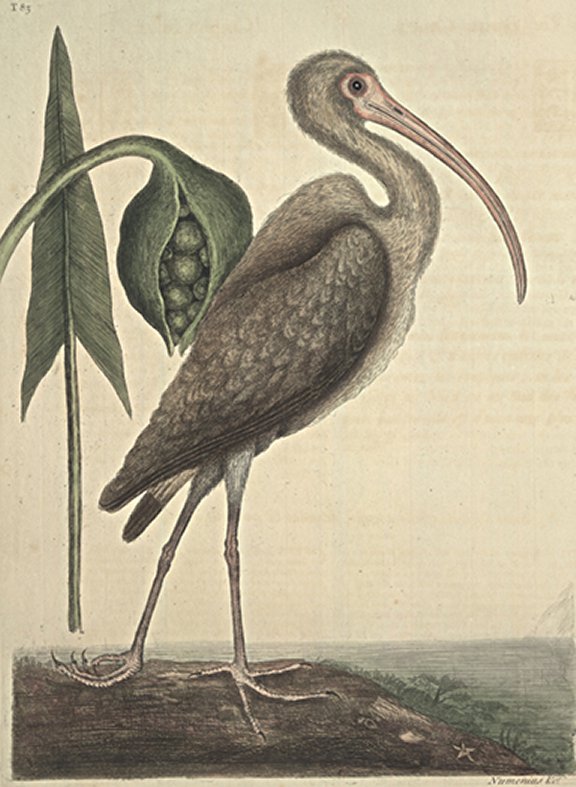Plate Number: I 83Numenius Fuscus: The Brown Curlew This is about the Size of the White Curlew: it has the same Sort of Bill, with Red round the Basis of it, and Eyes as the white Curlew; the rest of the Head and Neck of a mixt Gray. The upper part of the Back, Wings, and Tail, are brown. The lower Part of the Back and Rump white, as is the Under part of the Body. The Legs are reddish like those of the White, as is likewise its Shape and Size. This near resemblance in them made me suspect they differ'd only in Sex, but by opening them I found Testicles in both the Kinds. The Flesh of this is dark, having not that yellow Colour which is in the White Curlew. They both feed and associate in Flocks, yet the white are twenty times more numerous than the brown Kind. In the Gizzard were Crawfish. Both these Kinds, accompanied with the Wood Pelicans, come annually about the middle of September, and frequent the watery Savannas in numerous Flights, continuing about Six Weeks, and then retire, and are no more seen until that time next Year. In many of the Hens of the white Kind were Clusters of Eggs; from which I imagine they retire somewhere South to breed; Carolina at that time of the Year would probably be too cold for that Work of Nature, it being much colder in the same Latitude in that Part of the World than in Europe. Very little or no Difference appear in the Feathers of the Cock and Hen. Arum Sagitariae folio angusto, acumine &auriculis acutissimisThis Plant grows in Ditches and shallow Water to the Height of three or four Feet, with many Arrow-headed Leaves, on long succulent Stalks springing from a tuberous Root, from which also shoot forth large round Stalks, at the End of each of which grows in a hanging posture a large roundish green Seed Vessel or Capsula, containing many globular green Berries of different bigness, some of the Size of Musket Bullets, and others but half as big; this Seed Vessel (which is about the Size of a Hen's Egg) when mature opens on both Sides, and discloses the Seeds, which are green and tender when ripe. I have seen the Indians boil them with their Venison. They were excessive hot and adstringent in my Mouth, while green, but when boiled they lost those Qualities, and were very palatable, and, as they said, wholesome. They are ripe in July. |